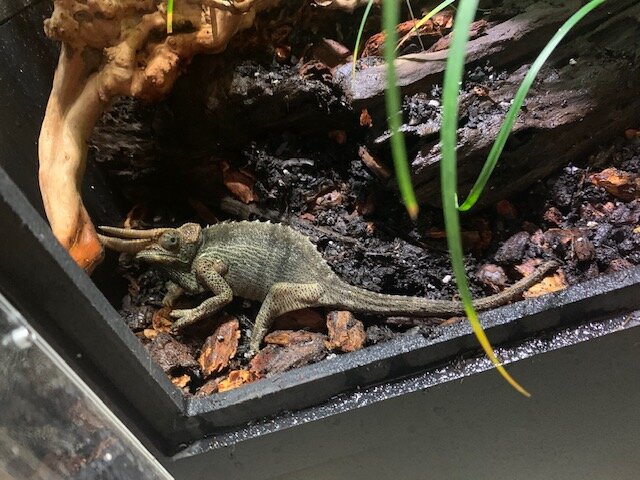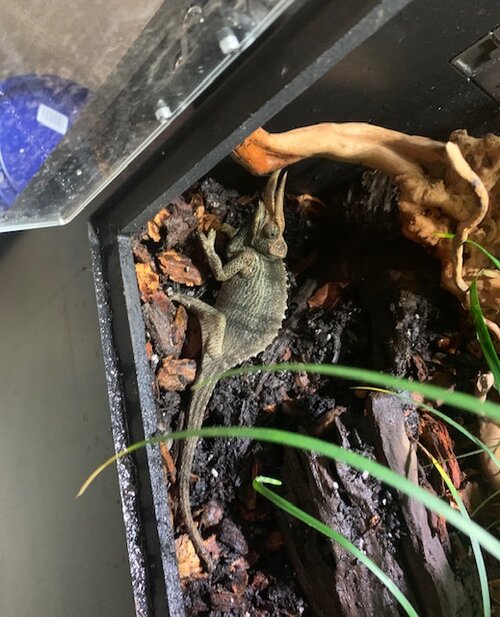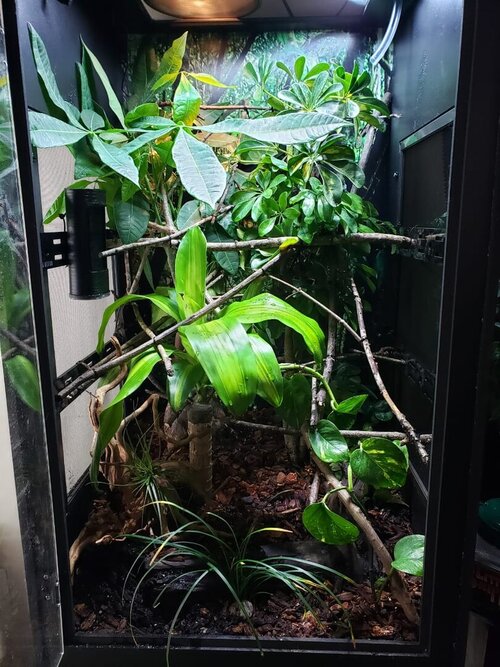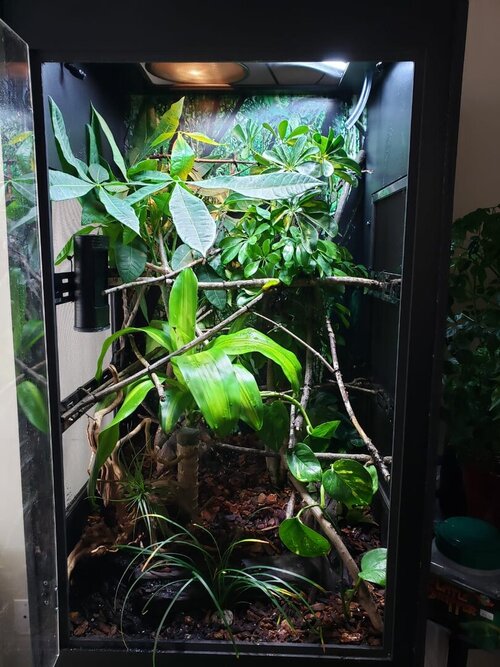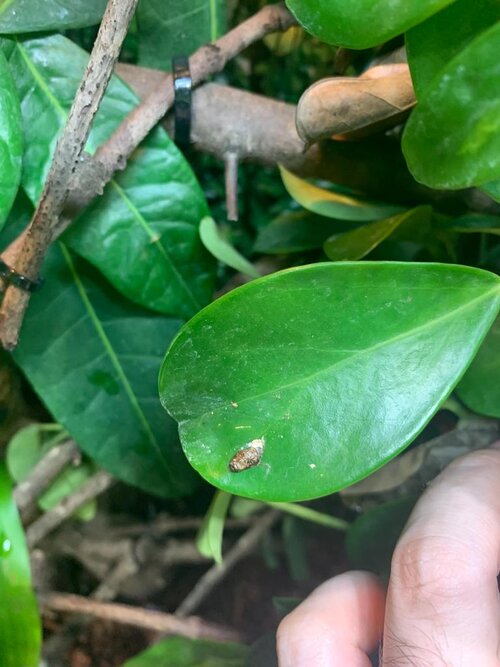Archangel
Member
Chameleon Info:
Cage Info:
Current Problem - The chameleon is laying at the bottom of the cage. He has moved around but he stays at the bottom/mid of the enclosure. I am currently looking for an exotic vet to take him but in the meantime I think its a good idea to post it here.
This is a video of him eating a few days ago:
- Your Chameleon - Jackson, male (can someone help me check if this is accurate?), 4 months (according to the store)
- Handling - We have not tried to handle him yet. We leave him alone for the most part until he adapts.
- Feeding - Crickets, Hornworms, and some Dubia roaches. We use a feeding cup and he has not eaten since yesterday.
- Supplements - We are using repti calcium, exoterra calcium + d3 and reptivite without d3. We feed him 3 days a week with calcium and one day a week we do the calcium + d3 and the vitamins every 2 weeks
- Watering - We mist two times a day for 4 minutes (Mistking). One in the morning and the other one before going to sleep. If any one has any suggestions about a better schedule please let me know. Maybe he is not drinking enough water?
- Fecal Description - No, we have not tested it for parasites.
- History - We bought him from a store a month ago.
Cage Info:
- Cage Type - 2x2x4 PVC with screen on top and the sides, acrylic on the front.
- Lighting - 11 am to 11 pm and we use Arcadia 6% uvb lights. For the heating bulb we use a regular fluorescent bulb with a dimmer to control the temperature.
- Temperature - The basking spot is always between 83-85F, we use a temperature gun and a probe for measurements. The bottom of the cage stays at 71.
- Humidity - Humidity levels are 30% - 50% during the day and at night 90%. We run a humidifier to keep the humidity high at night.
- Plants - Yes, we are using a money tree and umbrella plant's (we recently added more plants to add more cover). We cleaned them before placing them in the enclosure. For the soil we use fox farm happy frog and I cover the it with tree bark.
- Placement - The enclosure is raised around 3 foot from the floor. Its next to a window and there is an ventilation exhaust near.
- Location - Georgia, Kennesaw.
Current Problem - The chameleon is laying at the bottom of the cage. He has moved around but he stays at the bottom/mid of the enclosure. I am currently looking for an exotic vet to take him but in the meantime I think its a good idea to post it here.
This is a video of him eating a few days ago:
Attachments
Last edited:

